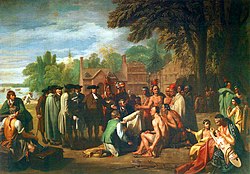History
In 1984, the United States Supreme Court held in Solem v. Bartlett , 465 U.S. 463 (1984), that "only Congress may diminish the boundaries of an Indian reservation, and its intent to do so must be clear." [1] This was noted in the Court's 2016 case Nebraska v. Parker , 577 U.S. ___ (2016), in which the Court held that an 1882 Act passed by Congress did not diminish the Omaha Reservation.
The Solem case established a "diminishment doctrine" that U.S. courts could use when evaluating whether diminishment had taken place. [2]
In the 1994 case Hagen v. Utah , 510 U.S. 399 (1994), the Supreme Court held that Congress's 1902 Act had diminished the Uintah Reservation. [3] The Court applied its doctrine established in the Solem case.
This page is based on this
Wikipedia article Text is available under the
CC BY-SA 4.0 license; additional terms may apply.
Images, videos and audio are available under their respective licenses.
